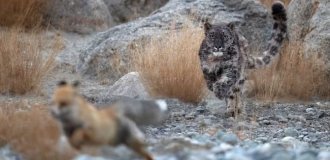Common squirrel: facts about the rodent that you might not know (10 photos)
Squirrels are one of the most common rodents in the world. They are thrifty, agile, curious and capable of surprising. 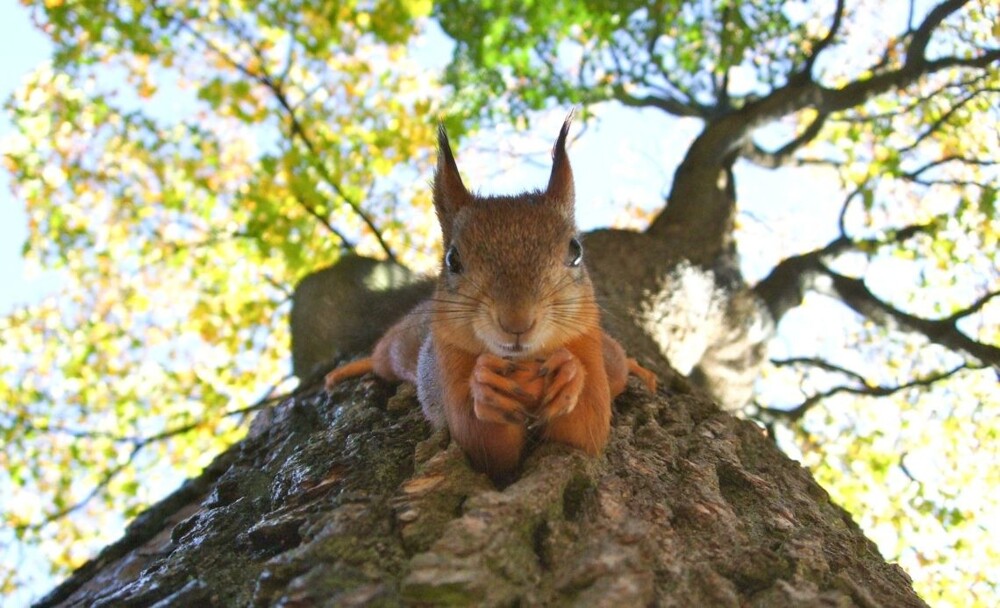
Common squirrel, or wecksha. What can you tell me when everyone saw her and even hand-fed her? For example, did you know that these fluffies are active scavenger predators? Did you know that rodents came to us from North America? Have you heard about the fact that a squirrel can be not only red? Wow, so sit back and get ready to be amazed! 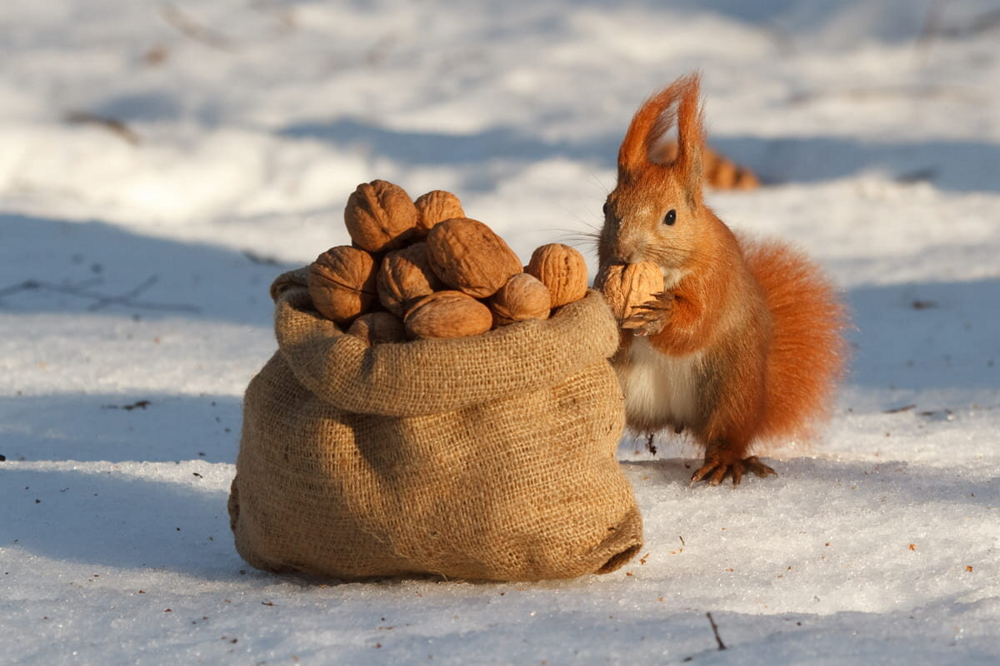
The squirrel, as a biological order, arose in North America approximately 40 million years ago. At the same time, rodents appeared in Eurasia relatively recently - only 3 million years ago. They could not have come to our continent before: squirrels need forests to live, and in those days most of the lands were occupied by steppes, cold and mammoths. But how could a little thing weighing 300 grams move to another continent and populate it so successfully? 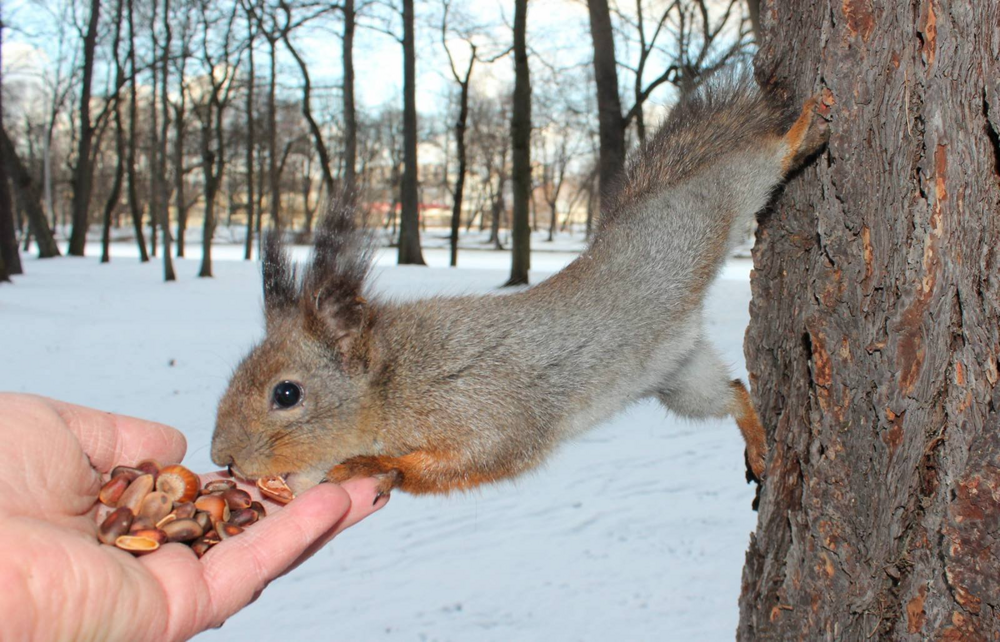
At a time when the squirrel crossed from one continent to another, there was Beringia, a land bridge connecting Alaska and Asia. Not only rodents traveled through it, but also saber-toothed cats, mammoths and even people! 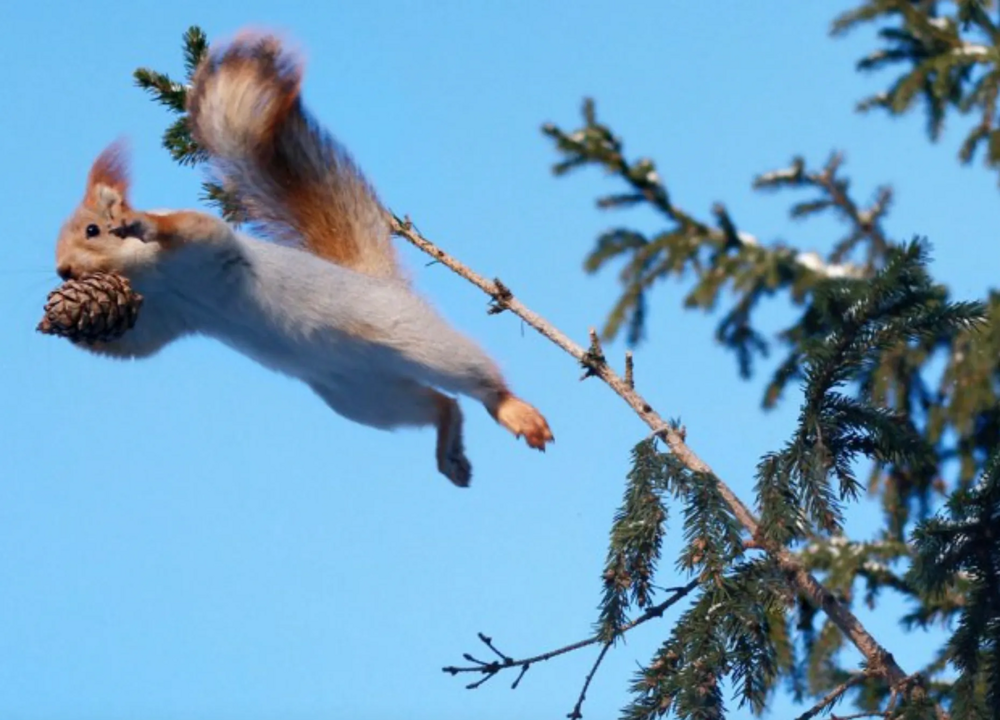
But why do small animals go so far? Well, they are still touring the continent no worse than Dasha the traveler! When there is a fire, drought or other disaster in the forest, which provokes lack of food, the squirrels take their paws and migrate. Usually not far, but in the worst cases, the squirrel brotherhood goes 300 (!) kilometers from their native places. Yes, many will die. But those lucky ones who find a new fertile forest will become the founders of their population. 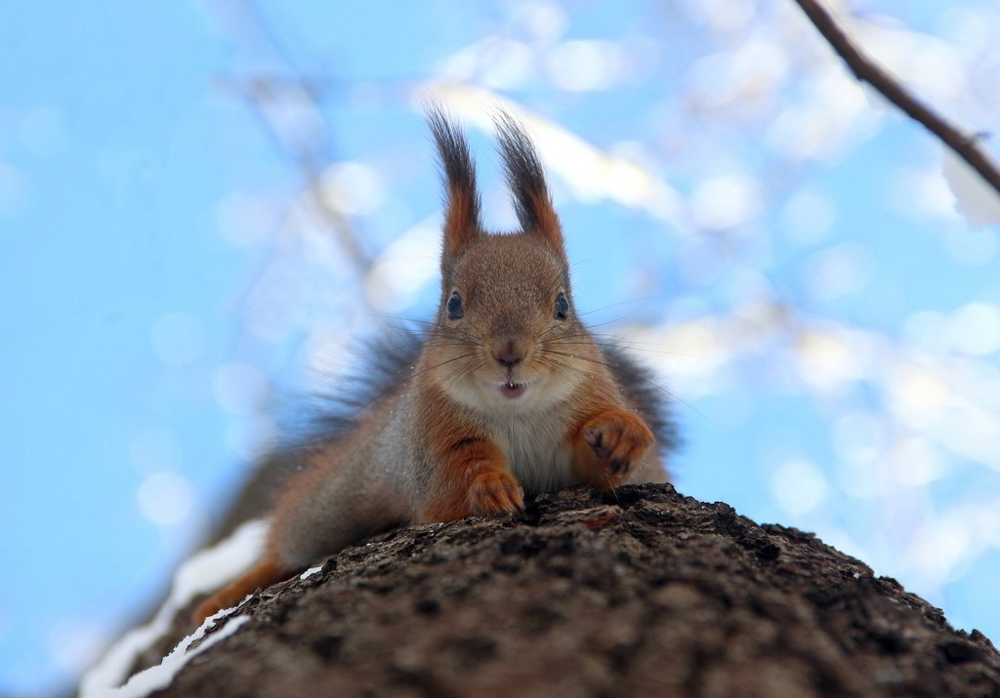
Thus, today, among one species of common squirrel, at least 23 subspecies are known and described, and approximately the same number are in question of recognition. All of them differ slightly in the size of body parts and very significantly in color. Even among animals of the same subspecies, there are different color morphs - colors: brown, black, white and even spotted. If you try, you can find a squirrel for every taste! 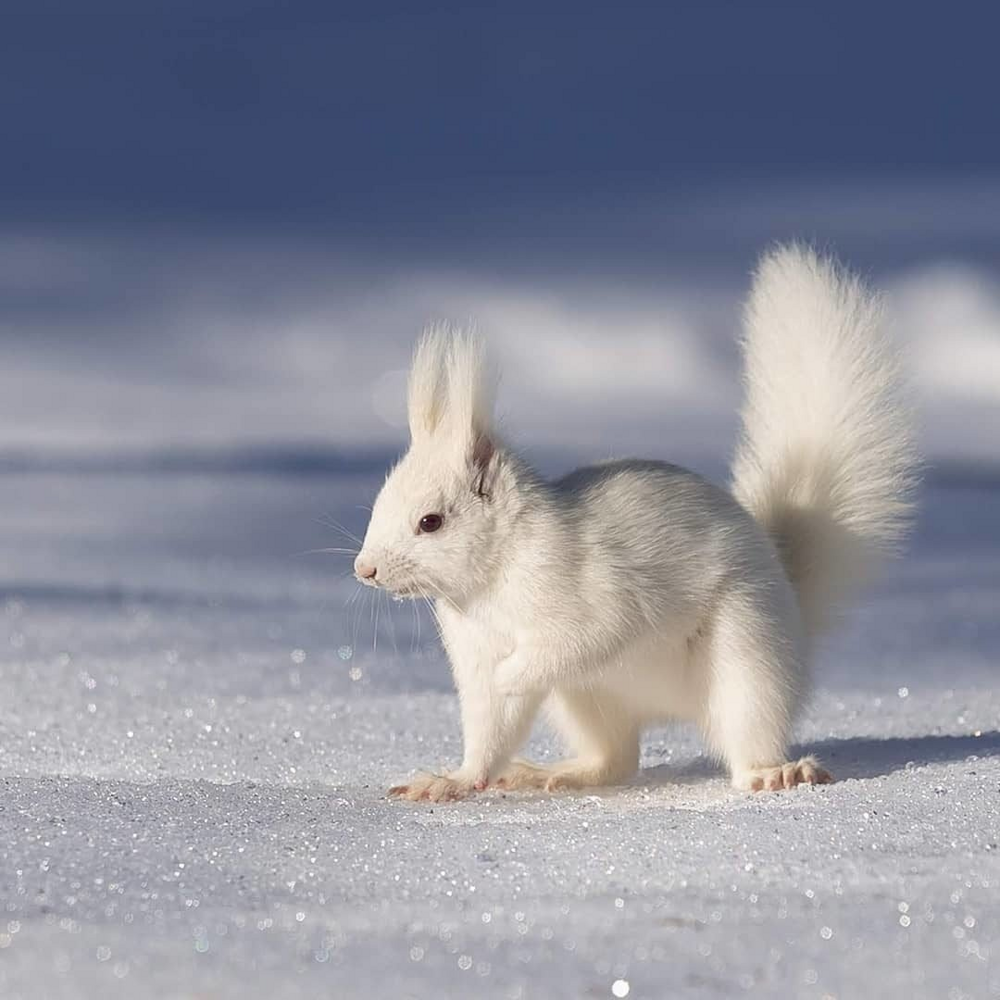
By the way, about taste: rodents are always happy to eat. Not only nuts, seeds, buds, pine needles, berries, tubers and other vegetation are used, but also... meat. Rodents switch to a protein diet during the breeding season, when the lack of calories hits the body hard. Cute fluffies catch insects, steal eggs, destroy chicks and other small vertebrates. They don’t even disdain carrion and bones! At this time, the squirrel can eat up to 80 grams of food, and up to 80% of the time is spent searching for food. 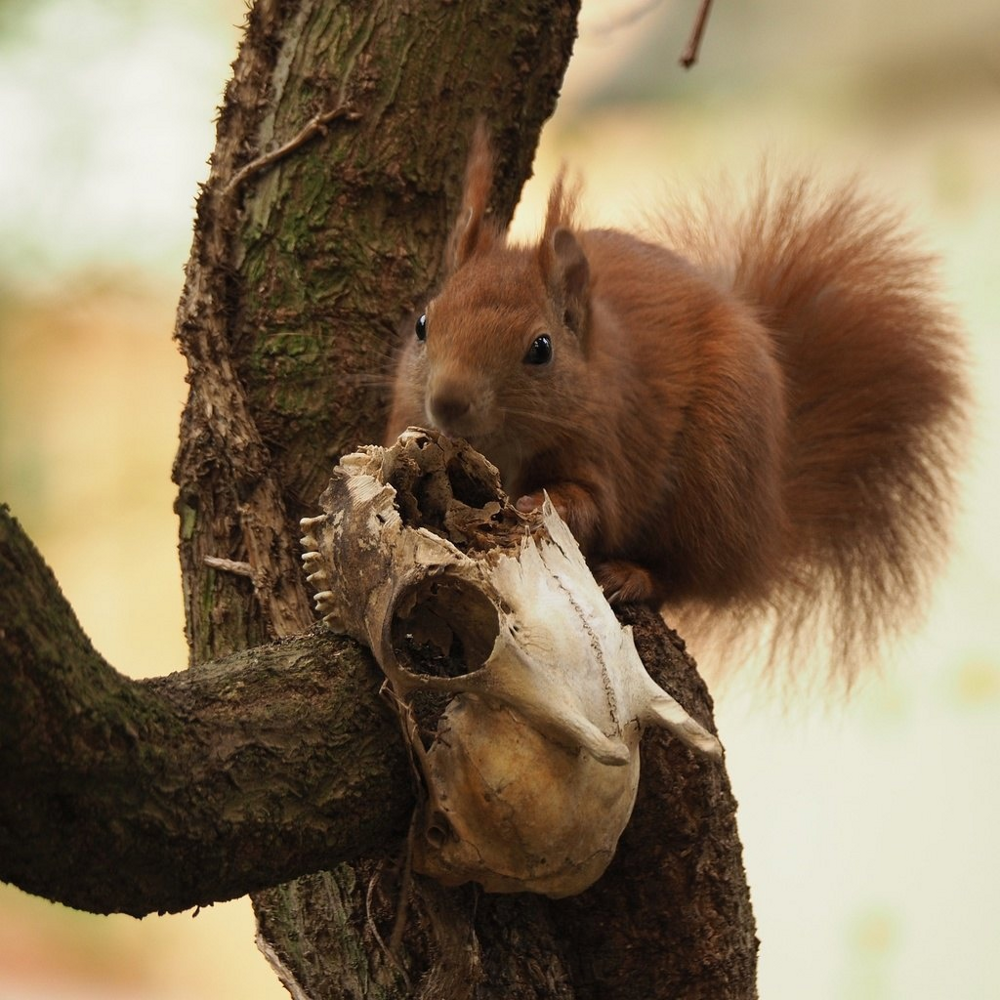
The animals organize this whole belly festival for the sake of their offspring. The lifespan of wild squirrels is relatively short - only 3-4 years, so the animals compensate for this with high rates of reproduction. In one fertile summer, squirrels from southern populations manage to produce 3 litters in a row, each of which contains up to 10 young squirrels. Not only do babies need to be fed, they also need to be provided with a cozy nest. The female's hollow is lined with twigs, grass, moss and other forest building materials. The result is an excellent shelter: even at 0 ⁰C outside the window, inside the nest will be dry, cozy and +20 ⁰C. 
Some squirrels build full-fledged nests, like birds. Such shelters are called gayno.
Naked and defenseless babies are born after 35-38 days of pregnancy. For the next 8-10 weeks, the baby squirrels are attached to their mother and their nest. But after that they are immediately ready for adult life. True, for most it will not last long: sad statistics say that less than 30% of all baby squirrels will survive the first winter. The reason for this is predators, diseases, frosts and lack of food. 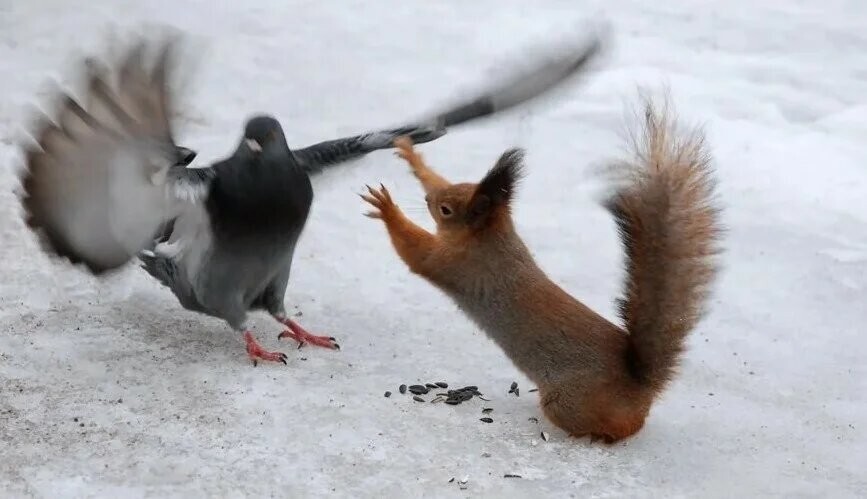
Squirrels, unlike many other mammals, do not hibernate during the winter. They simply make many, many reserves for the winter, put nuts in hiding places throughout their territory, insulate the nest and hope for a softoh winter. In winter, animals spend most of the day in the nest, where they sleep and save energy. Sometimes up to 10 animals can bask in one nest. 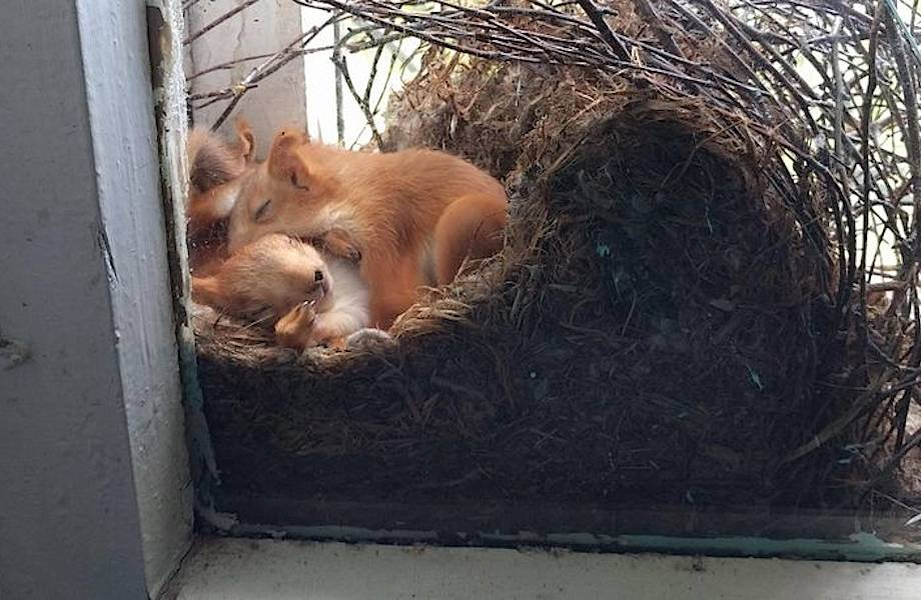
If the animals manage to survive the frosts, then next spring they will close the circle of life, and everything will go anew. Yes, both animals and people hunt forest saffron milk caps, but all this does not affect the squirrel population as much as diseases do. The cute squirrels that you hand feed in the park can easily be carriers of worms, ticks, fleas, tularemia, coccidiosis and other unpleasant things. Therefore, it is very important to wash your hands after contact with although friendly, but not so harmless rodents.










